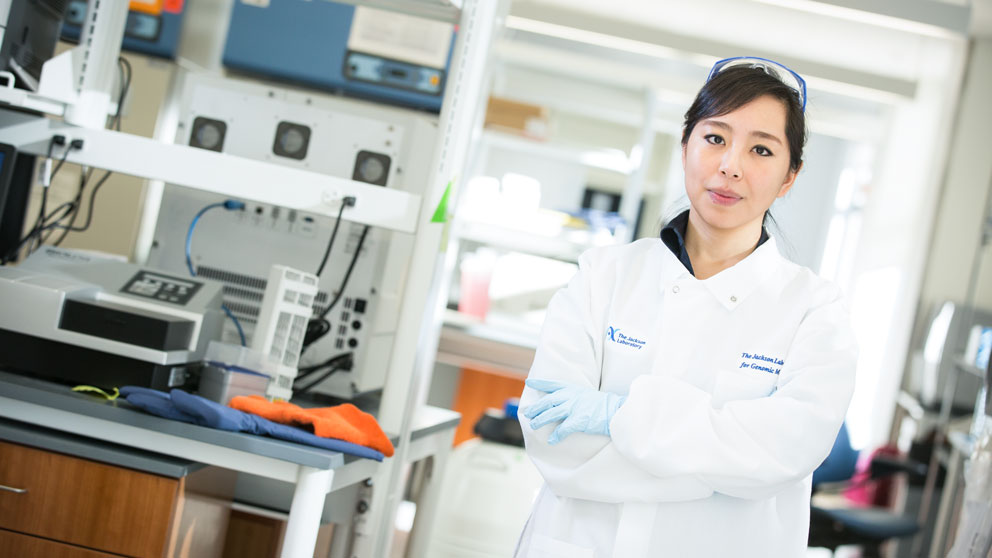 Microbiome researcher Julia Oh in her laboratory at The Jackson Laboratory for Genomic Medicine. JAX photo by Tiffany Laufer.
Microbiome researcher Julia Oh in her laboratory at The Jackson Laboratory for Genomic Medicine. JAX photo by Tiffany Laufer.
JAX, UConn researchers explore how patients’ microbiome, and risk of infection, change after time in a skilled nursing facility.
Older adults are at high risk for skin, lung, urogenital, gastrointestinal and other infections. Potentially deadly in themselves, infections can cause secondary problems, such as pneumonia following a “cold” or upper respiratory tract infection.
Older adults are particularly vulnerable to infection and other adverse events during the transition from a skilled nursing facility back to community living. More than 2 million Americans aged 65 and over spend time in these long-term care accommodations, many to recover from a health crisis such as a heart attack, stroke or accident.
Why does the move from skilled nursing facility to home lead to more of these adverse events? The answer may lie in how the change of environment alters the patients’ microbiome, the community of microorganisms that live and grow in and on every person.
A new $778,801 grant from the National Institute on Aging to The Jackson Laboratory (JAX) and UConn Health will fund studies of changes in the skin, oral and gut microbiomes of older adults who have been living in skilled nursing facilities and have transitioned back to the community.
JAX Assistant Professor Julia Oh, a Julia Oh, Ph.D.Our central goal is to develop microbiome therapeutics to treat human disease. We use diverse tools like genomics and synthetic biology to investigate our microbiome’s role in our health and engineer therapeutics.microbiome researcher and the principal investigator of the grant, says, “The microbiome can harbor numerous pro-disease elements, including infectious agents, antibiotic resistance genes, and pro-inflammatory stimuli. Understanding the microbiome in these individuals will provide important hypotheses into how the microbiome might contribute to the health of these older adults and conversely, how it might be modulated to improve their health.”
In collaboration with Julie Robison and George Kuchel of the UConn Center on Aging, Oh will perform a longitudinal study to compare the skin, oral and gut microbiomes of older adults living in skilled nursing facilities, those who live in the community, and those that transition from facilities to the community.
Oh notes that people 65 and over are the fastest-growing demographic in the U.S. “This population is significantly understudied, highly vulnerable to disease and accounts for at least $400 billion in Medicare costs per year. There is a critical need for new biomarkers and risk factors that impact older adult health to better serve this expanding population.”
National Institute on Aging, “Microbiome Plasticity and Pathogenicity in Older Adults: Baselines and Transitions from Skilled Nursing Care.” Grant Number 1R56AG060746-01A1, High Priority, Short Term Project Award.